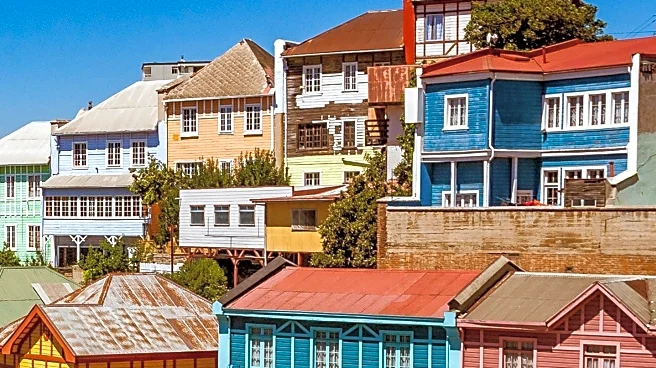What's Happening?
Spite houses, a unique form of architecture, have emerged in the United States as structures built with the intent to irritate or provoke specific individuals or groups. These buildings are often designed
to obstruct views or access, serving as physical manifestations of personal vendettas. A notable example is the 'Skinny House' in Boston, which was constructed by a Civil War soldier to block his brother's mansion after a dispute over land inheritance. Another example is the Equality House in Topeka, Kansas, painted in rainbow colors to counter the anti-LGBT rhetoric of the neighboring Westboro Baptist Church. These houses are part of a broader category known as hostile architecture, which includes designs like uncomfortable park benches meant to deter homeless people from sleeping on them.
Why It's Important?
The phenomenon of spite houses highlights the intersection of personal grievances and public spaces, reflecting broader societal issues such as property rights, individualism, and urban planning. In the U.S., where home ownership is a significant cultural value, these structures underscore the lengths to which individuals will go to assert their autonomy and express dissent. The existence of spite houses also raises questions about the role of architecture in social activism, as seen with the Equality House, which has become a symbol of LGBT rights. These buildings can influence public discourse by drawing attention to social issues and challenging the status quo.
What's Next?
As urban areas continue to develop and property disputes arise, the construction of spite houses may persist as a form of protest or personal expression. The ongoing dialogue about hostile architecture and its impact on communities could lead to changes in zoning laws and urban design practices. Additionally, the transformation of spite houses into tourist attractions or cultural landmarks, like the Equality House becoming a museum, suggests a potential shift in how these structures are perceived and utilized.
Beyond the Headlines
Spite houses offer a lens into the cultural and ethical dimensions of architecture, where personal conflicts are immortalized in physical form. They challenge the notion of private property as purely functional, instead highlighting its potential as a medium for artistic and political expression. The debate over whether these structures are acts of defiance or community disruption continues, reflecting broader tensions in American society regarding individual rights and collective responsibility.















